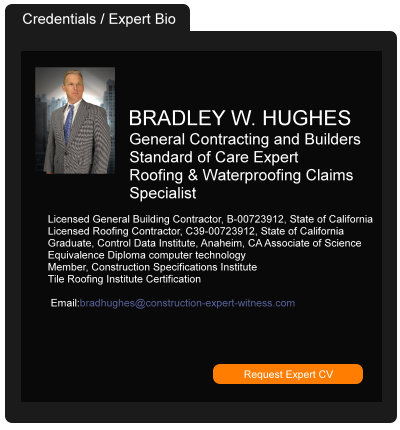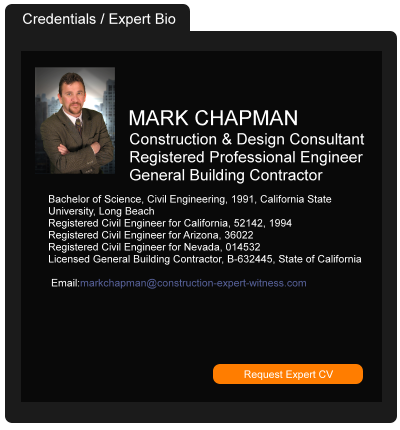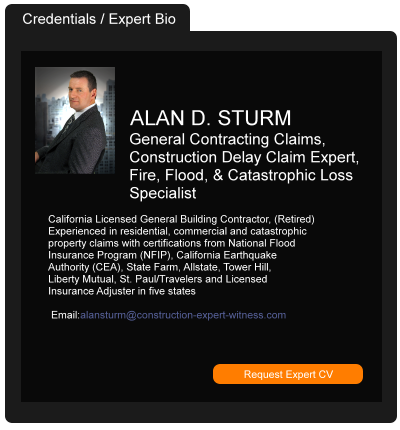Payne & Fears LLP Recognized by U.S. News & World Report and Best Lawyers in 2023 “Best Law Firms” Rankings
November 28, 2022 —
Payne & Fears LLPPayne & Fears LLP is pleased to announce that the firm has been recognized by U.S. News & World Report and Best Lawyers 2023 “Best Law Firms” list. Firms included in the 2023 edition of U.S. News – Best Lawyers “Best Law Firms” are recognized for professional excellence with consistently impressive ratings from clients and peers. This includes the top 5% of private practicing lawyers in the United States.
Payne & Fears LLP has been ranked in the following practice areas:
- Commercial Litigation
- Employment Law – Management
- Insurance Law
- Labor Law – Management
- Litigation – Labor & Employment
- Litigation – Real Estate
- Litigation – Intellectual Property
Additionally, on August 15, 2022, 11 of our attorneys were selected for inclusion in
The Best Lawyers in America® 2023. Collectively bringing decades of experience and dedication to their practice, Jeffrey K. Brown, Daniel F. Fears, Daniel M. Livingston, Thomas L. Vincent, Benjamin A. Nix, James L. Payne, Scott S. Thomas, and Kelby Van Patten received this respected achievement. Additionally, Leilani E. Jones, Sarah J. Odia, and Matthew C. Lewis were included in Best Lawyers: Ones to Watch 2023.
Read the court decisionRead the full story...Reprinted courtesy of
Payne & Fears LLP
Editorial: Qatar Is Champion of Safety Hypocrisy in Migrant Worker Deaths
December 26, 2022 —
ENR Editorial Board - Engineering News-RecordOnce the World Cup soccer tournament concludes, decency dictates that someone should put a wrecking ball to Qatar’s Al Bayt and Lusail stadiums, where the opening ceremonies and matches were held. There’s no polite way to say it: bulldozing the World Cup sports facilities is the only way to amplify to the world the cost in migrant construction workers lives in all that was constructed.
Reprinted courtesy of
ENR Editorial Board, Engineering News-Record
ENR may be contacted at enr@enr.com
Read the full story... Read the court decisionRead the full story...Reprinted courtesy of
Boston Catwalk Collapse Injures Three Workers
May 10, 2022 —
Scott Van Voorhis - Engineering News-RecordThe collapse of a catwalk in a defunct, 124-year-old power plant building in Boston on May 4 injured three workers in the latest in a spate of serious construction accidents in the city and its environs.
Reprinted courtesy of
Scott Van Voorhis, Engineering News-Record
ENR may be contacted at enr@enr.com
Read the full story... Read the court decisionRead the full story...Reprinted courtesy of
Action Needed: HB24-1230 Spells Trouble for Colorado Construction Industry and its Insurers
March 25, 2024 —
David McLain - Higgins, Hopkins, McLain & Roswell, LLCIn an apparent gift to plaintiffs’ construction defect lawyers, Representatives Parenti and Bacon introduced House Bill 24-1230 on February 12, 2024. The bill was assigned to the House Judiciary Committee and is scheduled for hearing on March 6th, during the afternoon session beginning at 1:30 pm. To date, the bill does not have any senate sponsors, perhaps because the senators are more interested in serving their constituents’ needs for attainable housing than in lining the pockets of their plaintiffs’ construction defect attorney friends.
According to the bill’s summary, HB 24-1230 contains the following provisions:
Current law declares void any express waivers of or limitations on the legal rights or remedies provided by the “Construction Defect Action Reform Act” or the “Colorado Consumer Protection Act.” Sections 1 and 4 make it a violation of the “Colorado Consumer Protection Act” to obtain or attempt to obtain a waiver or limitation that violates the aforementioned current law.
Read the court decisionRead the full story...Reprinted courtesy of
David McLain, Higgins, Hopkins, McLain & RoswellMr. McLain may be contacted at
mclain@hhmrlaw.com
Haight Ranked in 2018 U.S. News - Best Lawyers "Best Law Firms" List
November 02, 2017 —
Haight Brown & Bonesteel LLPHaight Brown & Bonesteel LLP is listed in the 2018 U.S. News – Best Lawyers "Best Law Firms" list with five metro rankings in the following areas:
Los Angeles
- Tier 1 in Insurance Law
- Tier 1 in Personal Injury Litigation - Defendants
- Tier 1 in Product Liability Litigation - Defendants
- Tier 2 in Personal Injury Litigation - Plaintiffs
- Tier 2 in Product Liability Litigation - Plaintiffs
Read the court decisionRead the full story...Reprinted courtesy of
Steps to Curb Construction Defect Actions for Homebuilders
June 15, 2017 —
Jason Daniel Feld – Kahana & Feld, LLPThe homebuilding and construction industries in California are at a record high in 2017 according to the National Homebuilders Association. While there is finally prosperity and growth for builders, developers and contractors after suffering from the recession of 2008, there is also a growth in construction defect claims. As with every industry and especially with construction, there are several risk prevention methods that can help curb this litigation.
Time Frames for Pursuing Construction Defect Claims
It is important to know and understand the time frames for which construction defect claims can be pursued by homeowners. There is a hard cut-off for construction defect litigation in California known as the Statute of Repose of 10 years. California Code of Civil Procedure (“CCP”) §337.15 provides a statute of repose that bars actions to recover damages for construction defects more than 10 years after substantial completion of the work of improvement. This provision is limited to property damage claims and does not extend to personal injuries (See, Geertz v. Ausonio, 4 Cal.App.4th 1363 (1992) and willful misconduct or fraudulent concealment claims. (See, Acosta v. Glenfed Development Corp., 128 Cal.App. 4th 1278 (2005).
There are also interim statutes of limitations for “patent” and “latent” defects discovered at the home also from the date of substantial completion. CCP §337.1(e) provides for a four year window to bring suit for deficiencies that are apparent by reasonable inspection (patent deficiencies). CCP §337.15(b) provides for deficiencies that are not apparent by reasonable inspection or hidden defects that require invasive testing to become apparent (latent deficiencies). A latent defect can become patent after it “manifests itself” (i.e. becomes observant – for example a roof leak) for which the four year window from the date of discovery would become the applicable statute of limitations.
The discovery rule effectively acts to toll the statute of limitation period on construction defect claims until they become reasonably apparent. (See, Regents of the University of CA v.Harford Accident & Indemnity, Co., 21 Cal.3d 624, 630 (1978). This is similar to a breach of contract claim, also a four year statute of limitation. Finally, the California Right to Repair Statute (SB800) – Civil Code §§895, et seq. specifically Civil Code §896 sets forth the “Functionality Standards” or a list of actionable defect items, including items affecting the component’s “useful life” and a catch-all provision for all items not expressed listed as defects in the statute. (Civil Code §897). The majority of the defects alleged have a 10 year statute of limitations. However, there are shortened statute of limitations for the following items:
| Functionality Standards | Statute of Limitations |
|---|
| Noise Transmission |
1 year from original occupancy of adjacent unit |
| Irrigation |
1 year from close of escrow |
| Landscaping Systems & Wood Posts (untreated) |
2 years from close of escrow |
| Electrical systems, pluming/sewer systems, steel fences (untreated), flatwork cracks |
4 years from close of escrow |
| Paint/Stains |
5 years from close of escrow |
| All other functionality standards (Civil Code §941(a)) |
10 years after substantial completion(date of recordation of valid NOC) |
Preventative Measures to Curb Construction Defect Litigation
Once the builder knows the time frames for construction defect claims, the following are some preventive measures to limit construction defect claims. As a reminder, homeowners are less likely to bring construction defect action if they feel that the builders are taking care of them.
1. Communicate With Homeowners Prior to Claims
It is imperative to communicate with the homeowners throughout the ten years statute of repose period. For example, most builders provide a limited warranty to the homeowners at the time of purchase. Homeowners are generally confused as to the length of the warranty and what the warranty covers. A practical tip to help curb construction defect claims is for the builder to send postcards or letters to the homeowners at the six month, one year and nine-year marks to advise the homeowner of: (1) the existence of the warranty and what is covered at each time frame; (2) the maintenance obligations of the homeowner at the various time frames; and (3) the fact that the home is approaching the ten-year mark. Most builders would rather deal directly with the homeowners through customer service than defend a construction defect litigation action where the costs to defend the claim will vastly exceed the cost to address the individual homeowner issues. The more the builder communicates with the homeowner in advance, the less likely it is that the homeowner engages in litigation against the builder.
2. Timely Response to Homeowner Claims
During the purchase process, provide the homeowners instructions on how to send in a customer service or warranty requests. Provide multiple methods for notification to the builder by the homeowner when issues arise in their home (fax, email, website forms, etc.). The builder should provide a timely response – within 48 hours of the notice if possible. The homeowner wants to receive some notification from the builder that they received their request and, at the very least, will investigate the claim. Even if it is determined to be a maintenance item or homeowner caused damage, the homeowner should receive: (1) an acknowledgement of the claim; (2) an investigation report of the issue; and (3) an action plan or conclusion statement – this can be a declination of repairs with an explanation as to the cause not being the result of original construction. Sometimes even sending a customer service representative to the home to listen to the homeowner claims and explaining that there are not repairs required is sufficient to satisfy the homeowner. The goal is to make sure the homeowner’s claims are acknowledged and that the builder is standing behind its product. In my experience, the fact that the builder failed to respond in a timely fashion to the homeowner is a significant motivating factor as to why the homeowner elected to enter formal litigation against the builder.
3. Be Proactive When Litigation Ensues Despite the fact that the homeowner has engaged an attorney and joined a construction defect action, the builder is not precluded from continuing to communicate with its homeowners. Several builders send letters to the non-plaintiff homeowners reminding them to contact the builder should they have issues at their homes rather than join the ongoing construction defect action. Under the law, clients can always talk to clients even if they are represented by counsel. While the attorneys for the builders cannot speak to the represented construction defect homeowners, the builder can communicate directly with its homeowners offering to honor its warranty and customer service procedures in lieu of the homeowner proceeding with the litigation. Both of these builder attempts to communicate with homeowners post-litigation have a dual effect – some homeowners elect to contact the builder to effectupate repairs and drop the litigation; while others elect to continue with the litigation. So proceed cautiously in this regard.
It is noted, there are many motivating factors for homeowners to bring a lawsuit against homebuilders that have nothing to do with the construction practices or customer service and are merely economically driven. However, these small steps in addition to providing solid construction practices should help curb construction defect litigation by homeowners.
Jason Daniel Feld is a founding partner of Kahana & Feld LLP, an AV Preeminent boutique litigation firm in Orange County specializing in construction defect, insurance defense, employment and general business litigation matters. The firm was founded with the goal of providing high-quality legal services at fair and reasonable rates. The firm believes that what defines attorneys is not their billing rates, but their record of success, which speaks for itself. For more information, please visit: www.kahanafeld.com.
Read the court decisionRead the full story...Reprinted courtesy of
Court Extends Insurer Rights to Equitable Contribution
October 28, 2015 —
Christopher Kendrick & Valerie A. Moore – Haight Brown & Bonesteel LLPIn Underwriters of Interest v. ProBuilders Specialty Ins. Co. (No. D066615; filed 10/23/15), a California appeals court refused to enforce an “escape” other insurance clause in an insurer versus insurer contribution action, refused to enforce a Contractors Special Conditions endorsement and found that equitable tolling applied to rule that a nondefending insurer was obligated to reimburse defense costs incurred defending the two insurers’ common insured.
Certain Underwriters provided CGL insurance to Pacific Trades Construction & Development in effect between October 23, 2001 and October 23, 2003. ProBuilders Specialty insured Pacific Trades from December 9, 2002 to December 9, 2004. When Pacific Trades was sued in construction defect actions arising out of the development and construction of single family homes, Underwriters provided a defense, while ProBuilders declined to participate. The case was ultimately settled and when Underwriters sued ProBuilders for contribution to the defense costs, the trial court granted summary judgment for ProBuilders, finding its other insurance clause precluded any obligation to contribute or reimburse Underwriters.
Reprinted courtesy of
Christopher Kendrick, Haight Brown & Bonesteel LLP and
Valerie A. Moore, Haight Brown & Bonesteel LLP
Mr. Kendrick may be contacted at ckendrick@hbblaw.com
Ms. Moore may be contacted at vmoore@hbblaw.com
Read the court decisionRead the full story...Reprinted courtesy of
Home-Rentals Wall Street Made Say Grow or Go: Real Estate
July 23, 2014 —
Heather Perlberg and John Gittelsohn – BloombergAlexander Philips joined the rush to buy foreclosed U.S. homes four years ago, spending $40 million on houses in California and Nevada to operate as rentals. Now his firm, Twinrock Partners LLC, is getting ready to sell.
“We didn’t want to be the last one standing when the music stopped,” Philips, 38, said in a telephone interview. “We view this as a trade, not as a business.”
The U.S. home-rental industry, transformed over the past two years by Wall Street-backed companies that were built on the rubble of the housing crash, is poised to be reshaped again as landlords like Philips get out. Corporate owners with limited capital or deadlines to repay investors are now selling houses in bulk, or one by one, after a 26 percent surge in prices from a March 2012 low. For bigger firms, swallowing smaller competitors is among the best opportunities for growth as they shift their focus to managing scattered properties.
Ms. Perlberg may be contacted at hperlberg@bloomberg.net; Mr. Gittelsohn may be contacted at johngitt@bloomberg.net
Read the court decisionRead the full story...Reprinted courtesy of
Heather Perlberg and John Gittelsohn, Bloomberg


































































